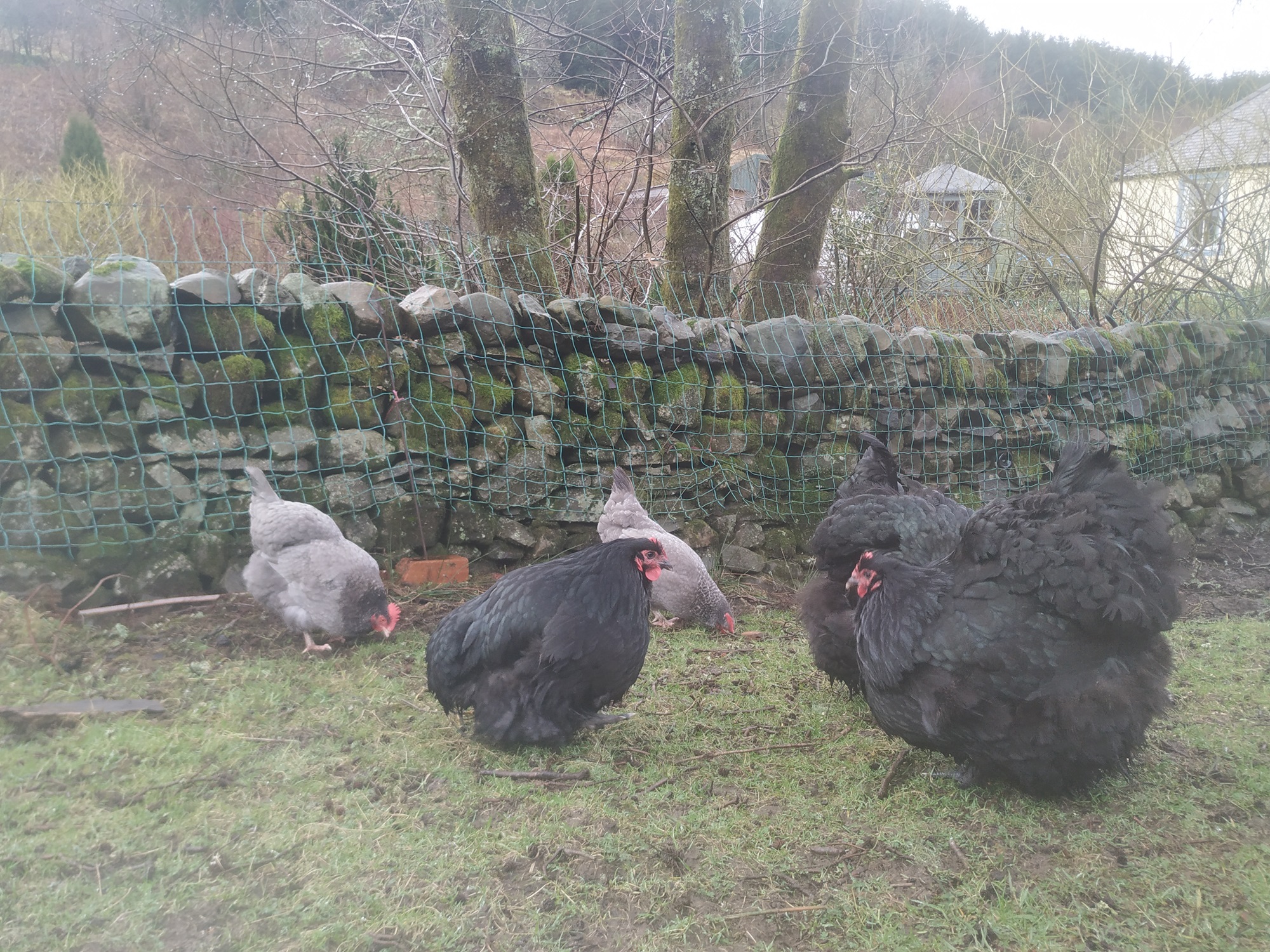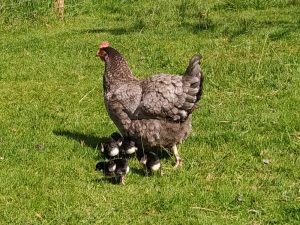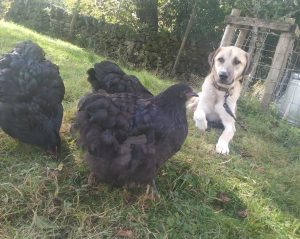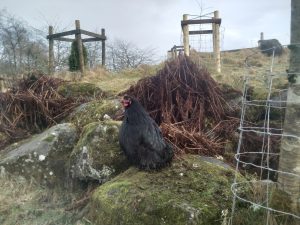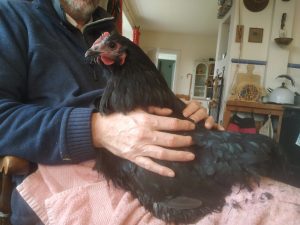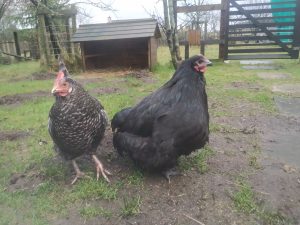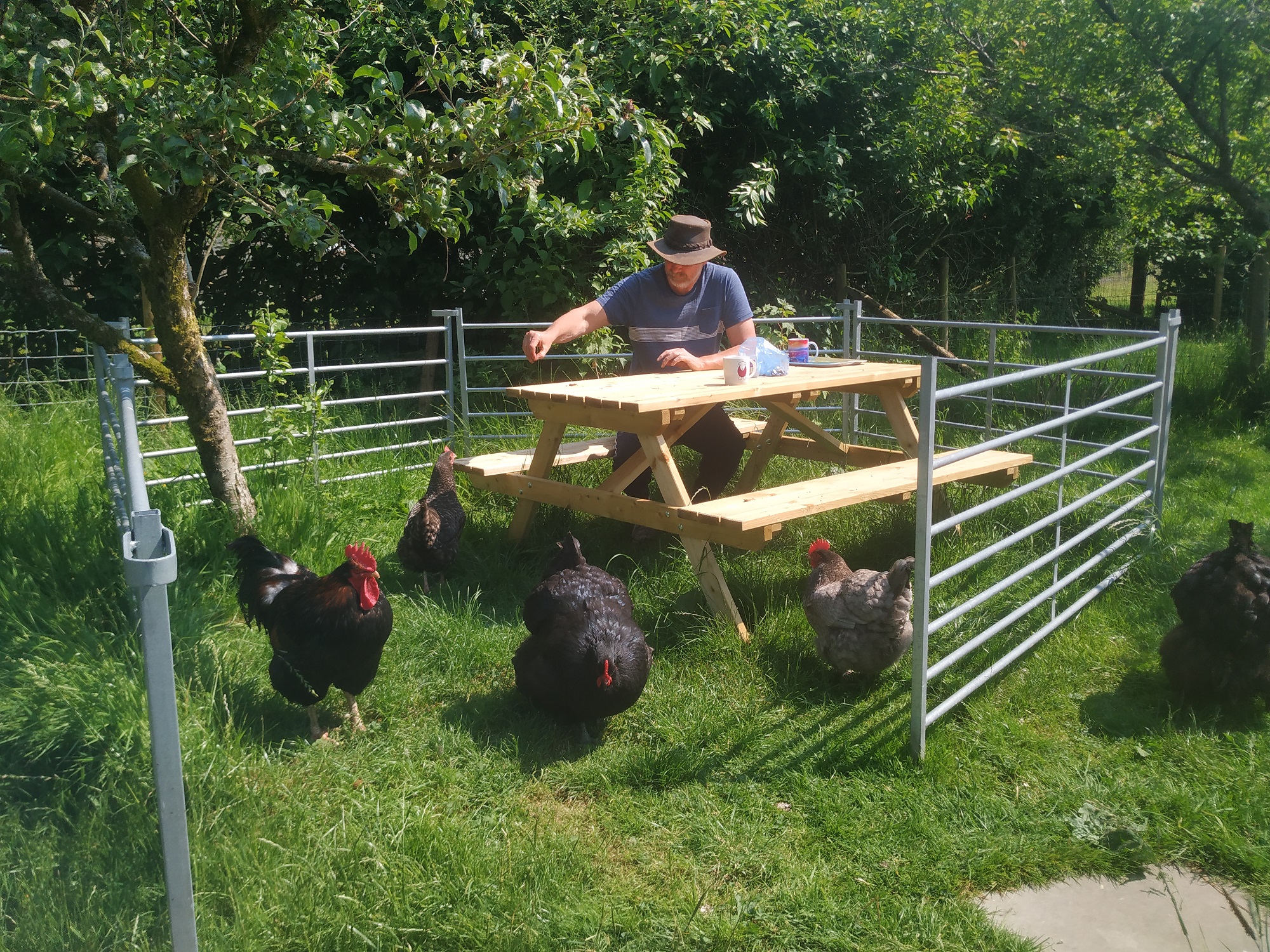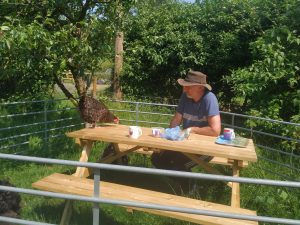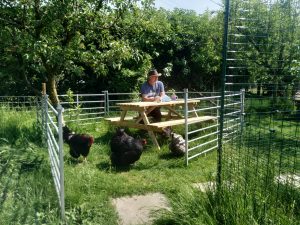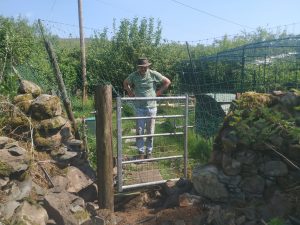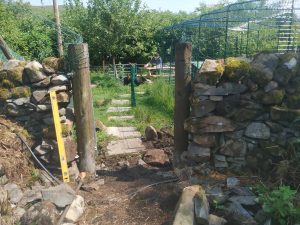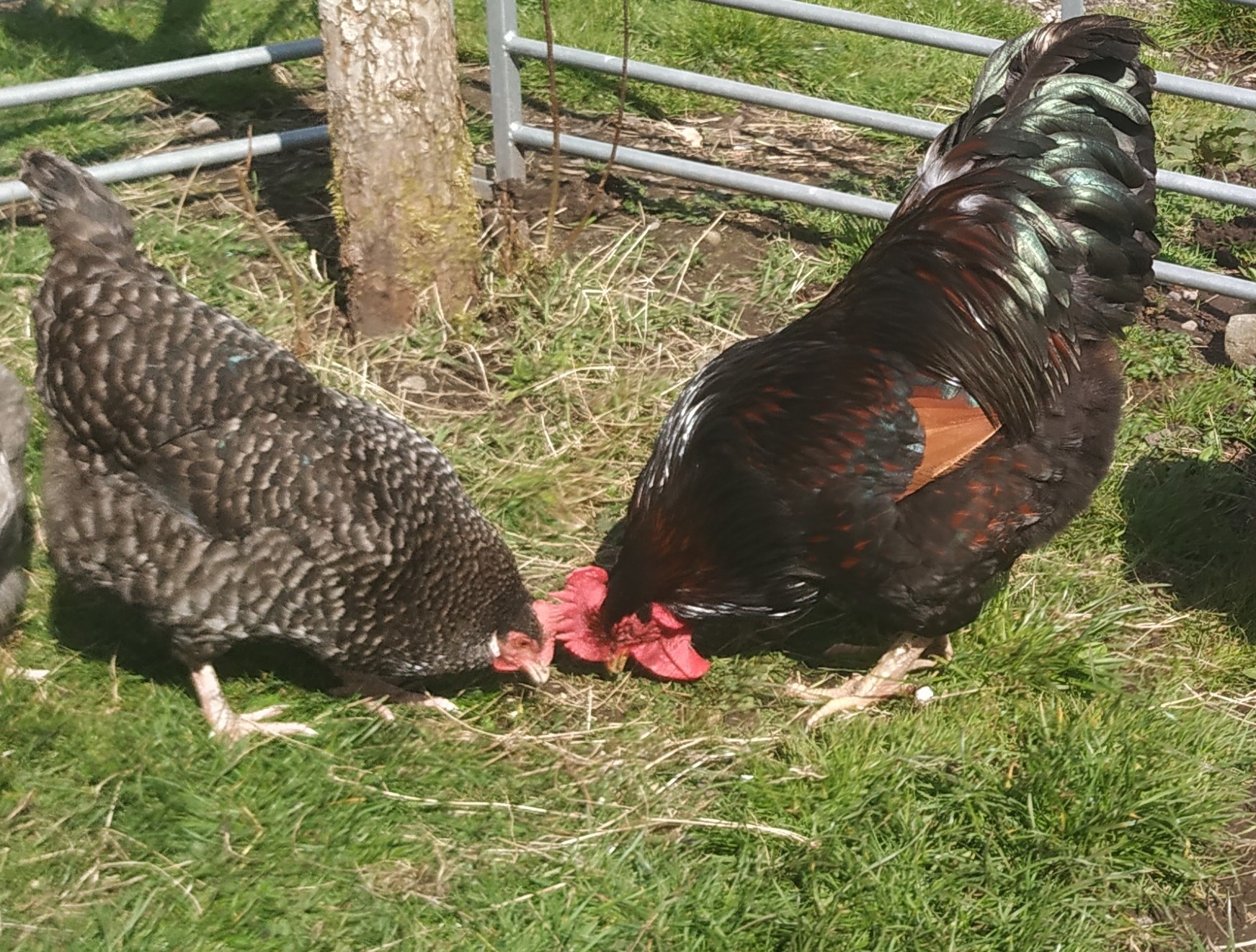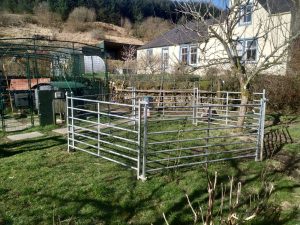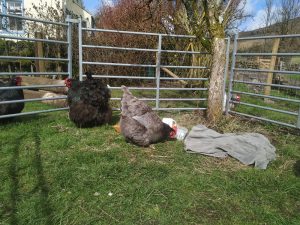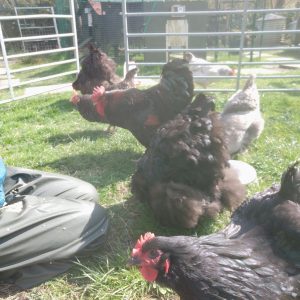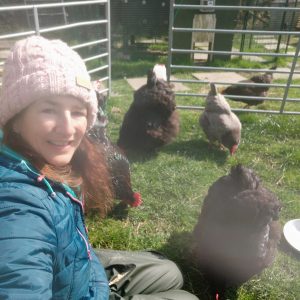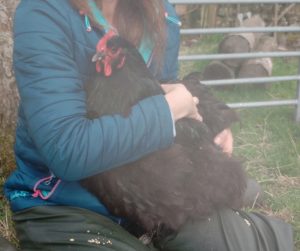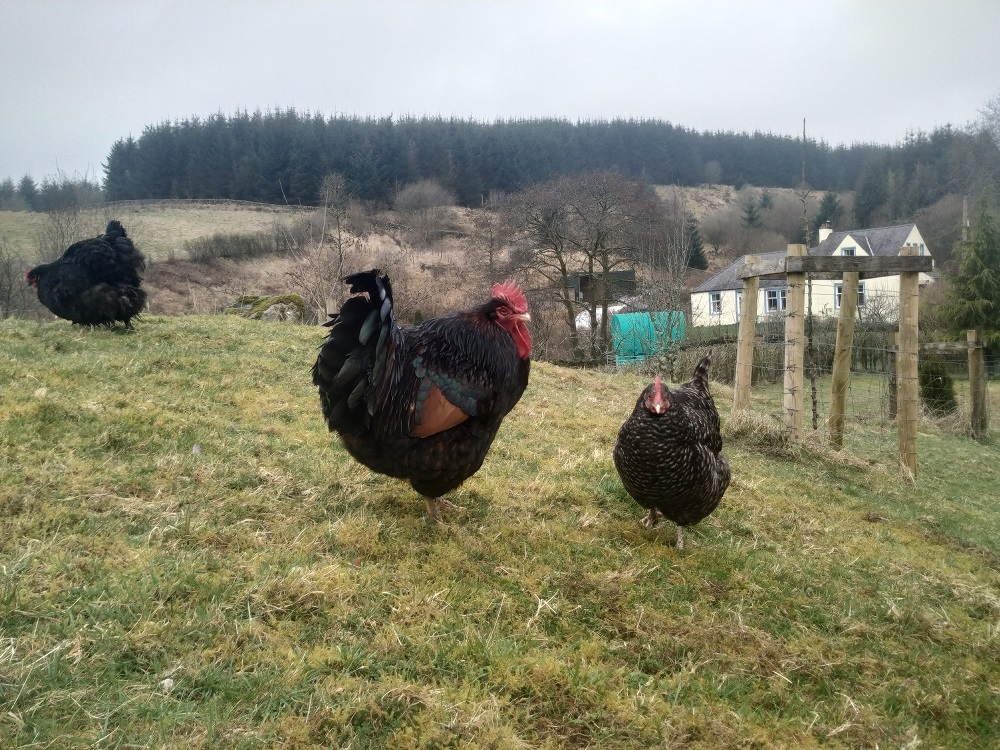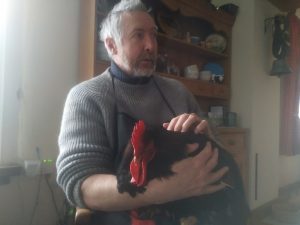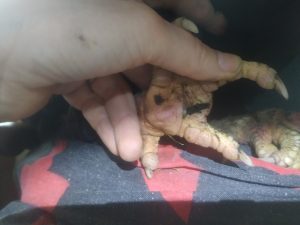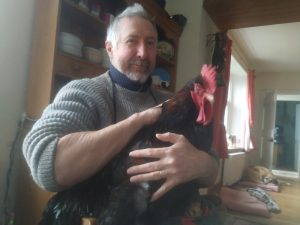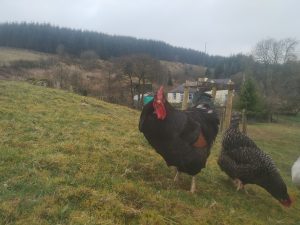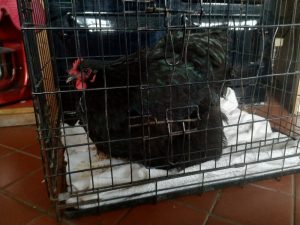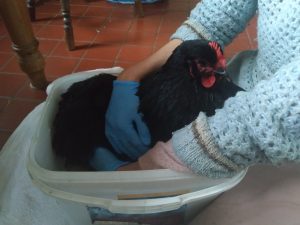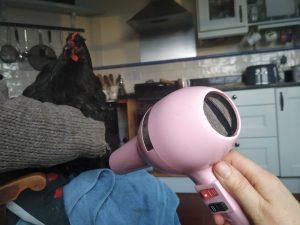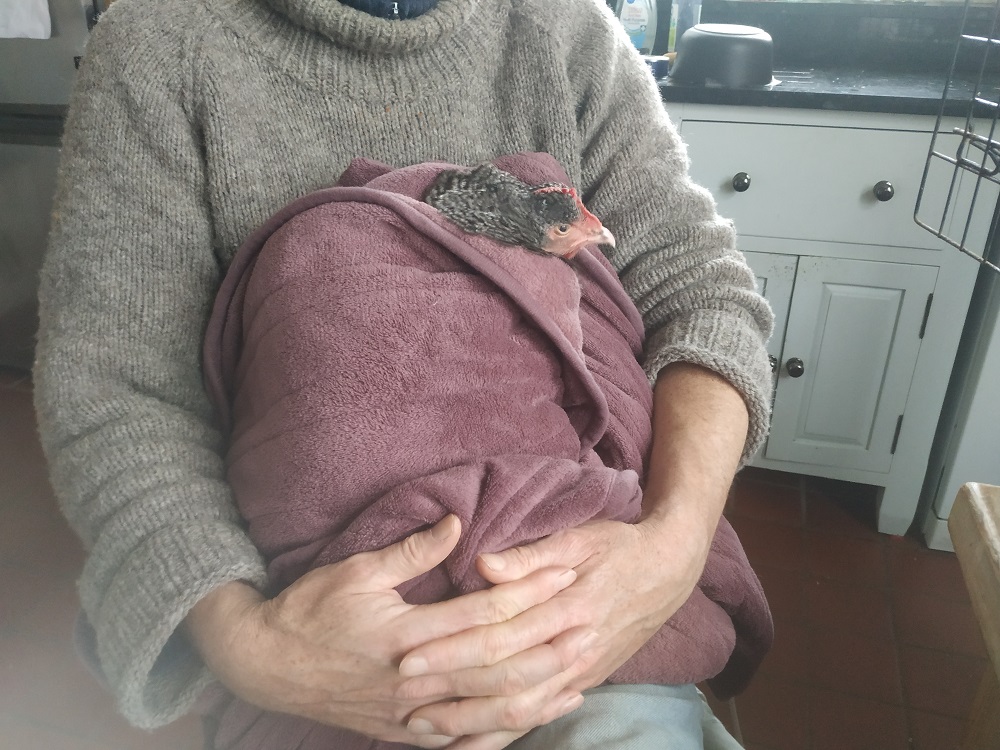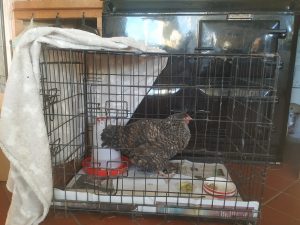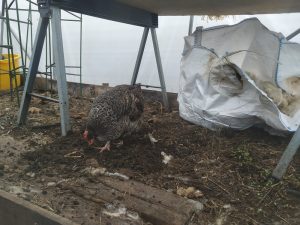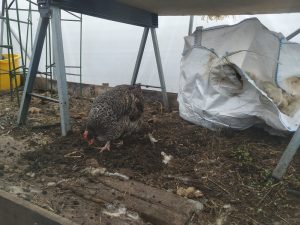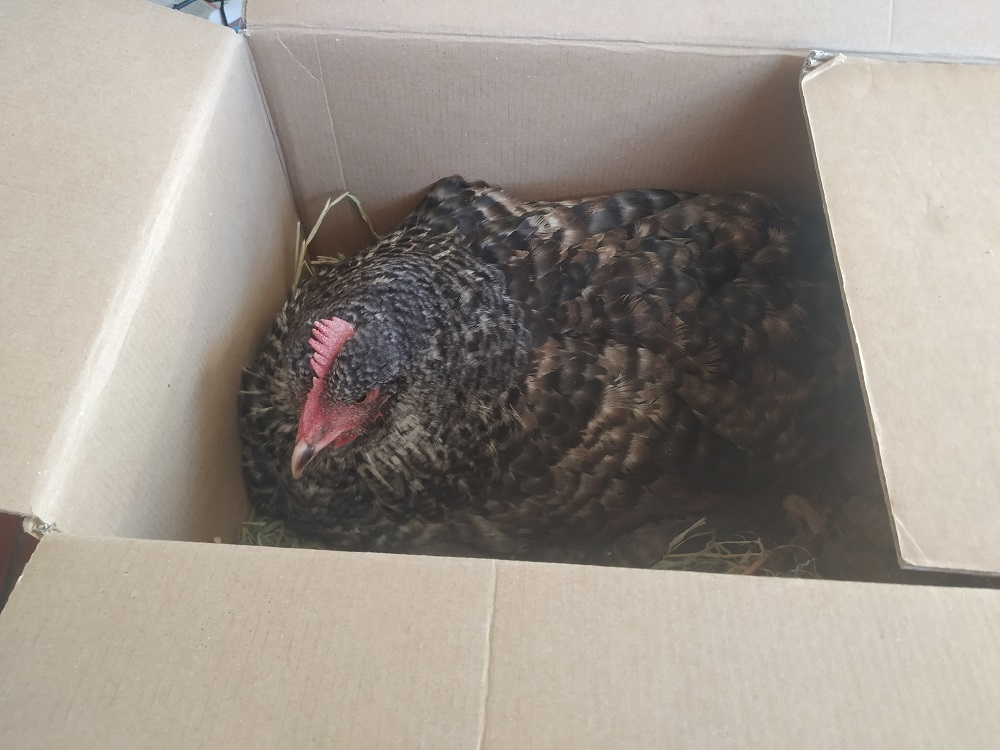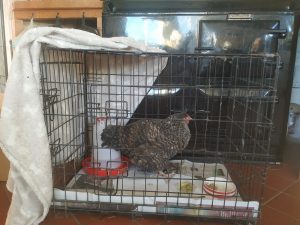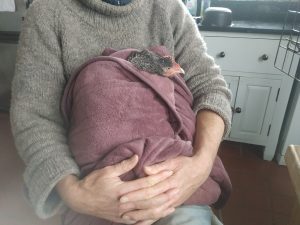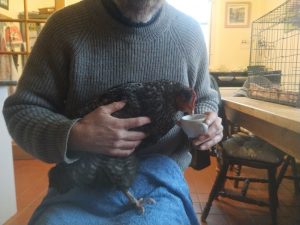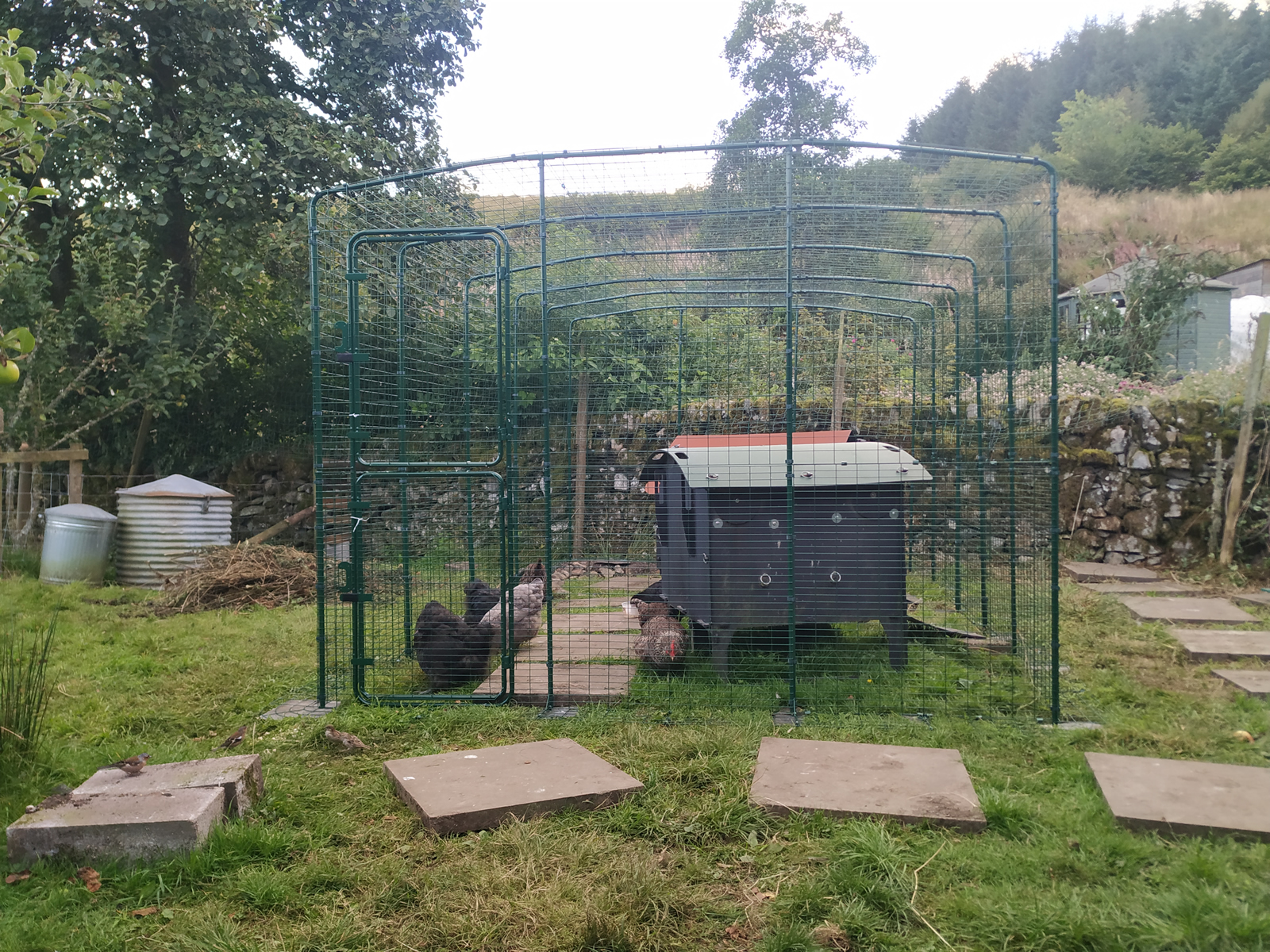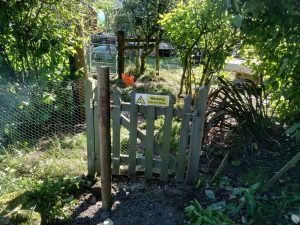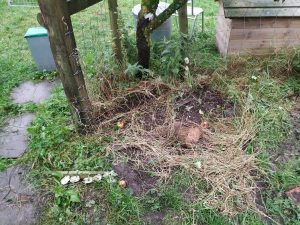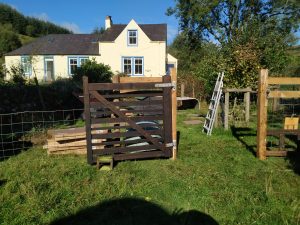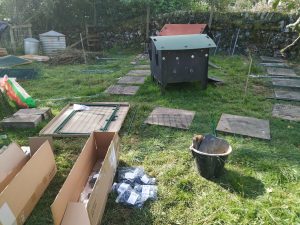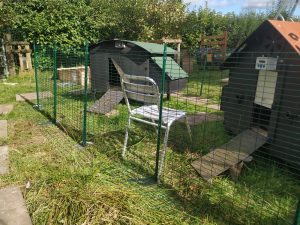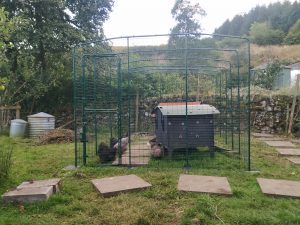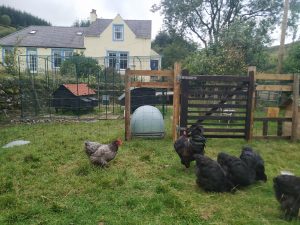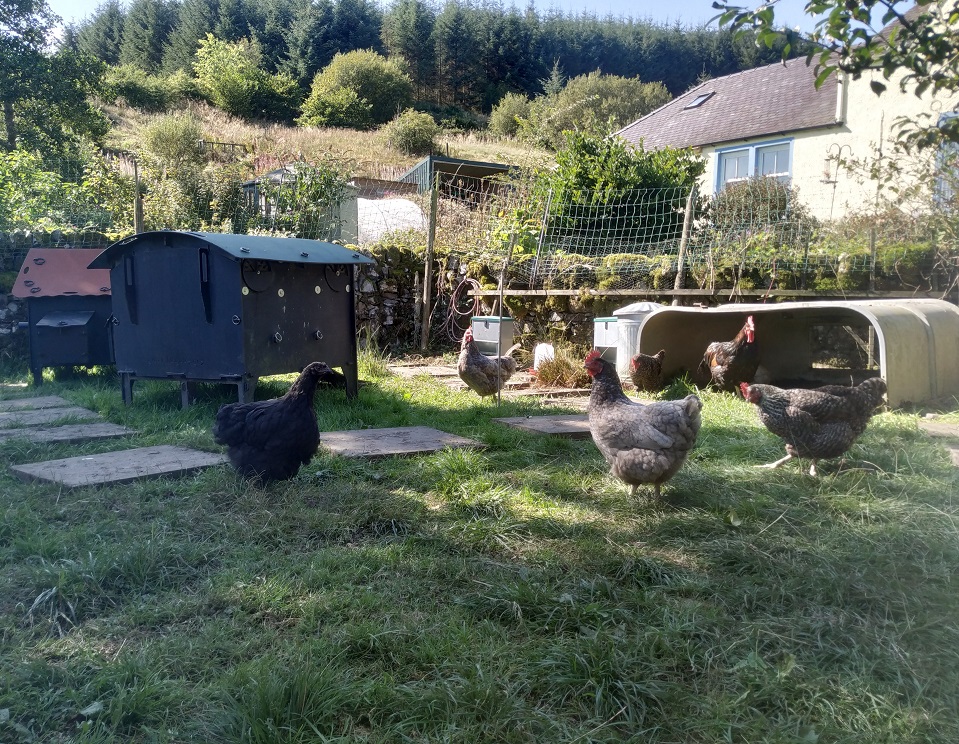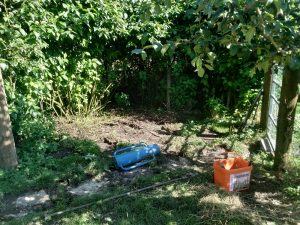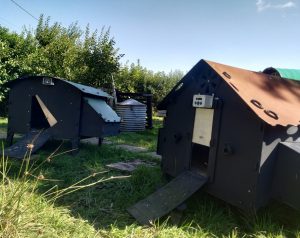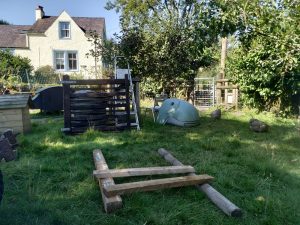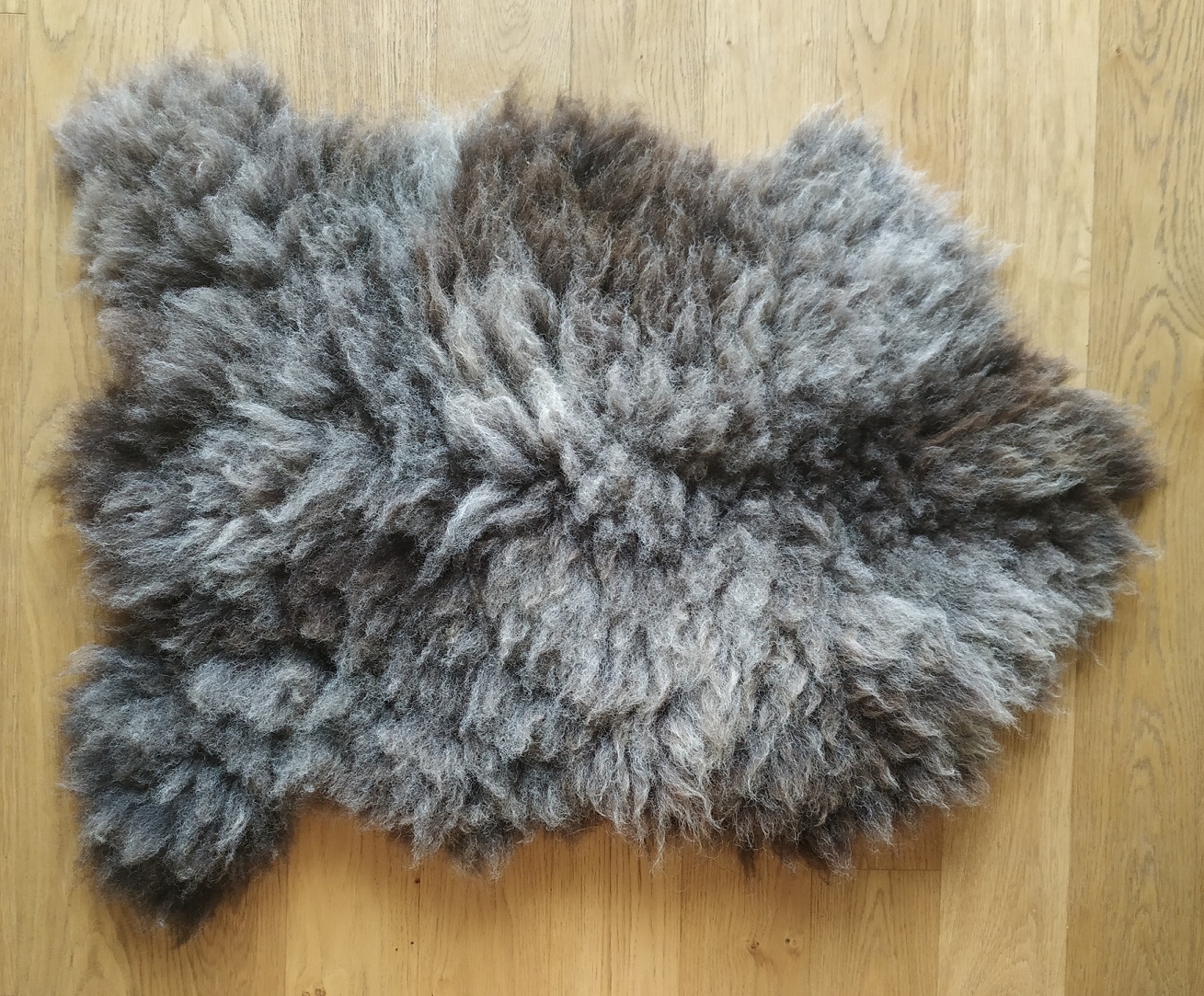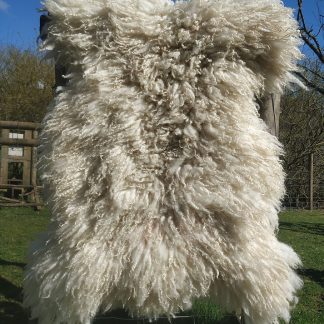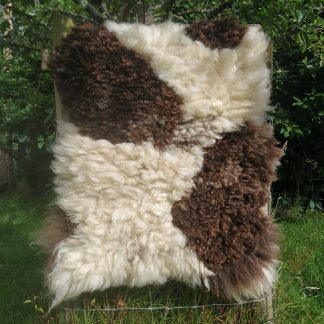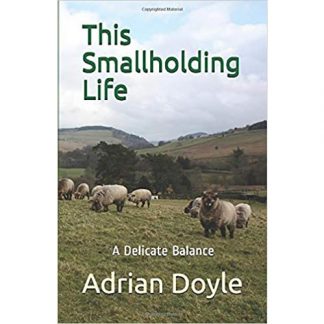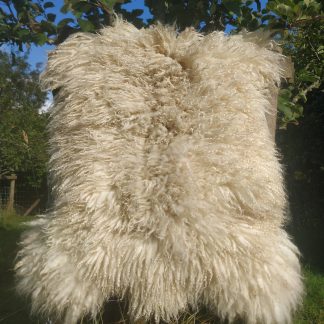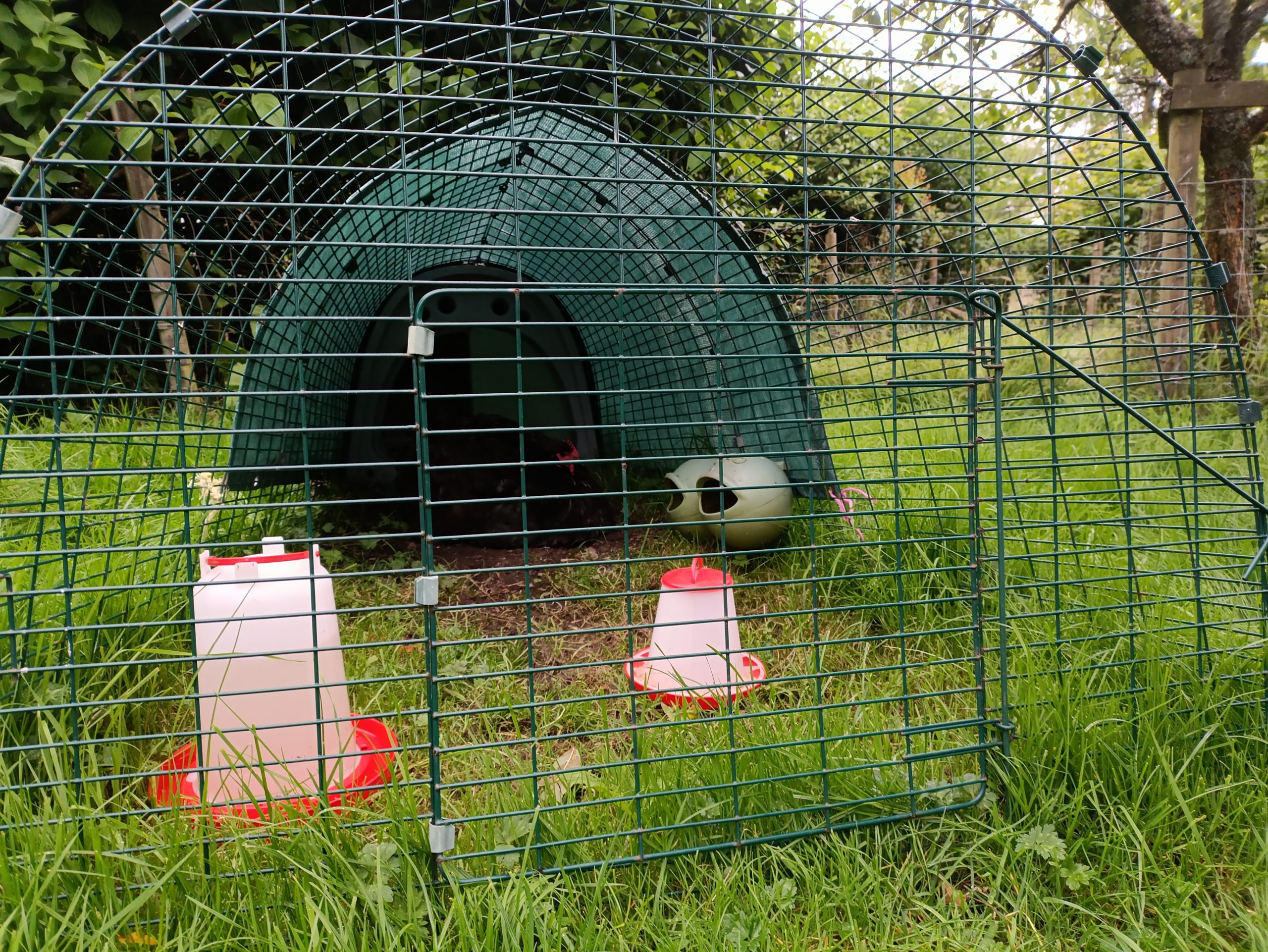
A few weeks ago, Betty one of our Orpington hens went broody. She stayed in the nest box all day ruffling up her feathers and pecking any hens that came too close. We pondered what to do, we don’t have a cockerel anymore so we’d either have to provide her with hatching eggs to sit on, or, take her off the brood. A broody hen sitting on infertile eggs isn’t a good situation, they lose condition quickly as they’ll stay on the nest for weeks waiting for their eggs to hatch, which of course they never do. We’d have to make our minds up soon so we had a cup of tea which is always helpful. After mulling things over we decided to give Betty a chance to be a mother hen and get her some hatching eggs. As a bonus, it would be good to increase our flock. Fingers crossed we’d get some girl chicks.
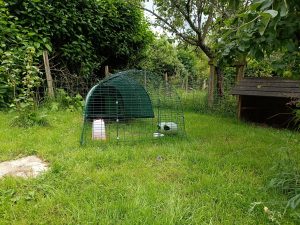
So we set up a nursery coop with a run attached in the orchard. This would give Betty some alone-time while she sat on her nest. The other hens would be around but wouldn’t be able to get to her. Hens can get funny with a broody lady in the flock and we didn’t want Betty to be stressed out while sitting on her eggs.
The best time to move a broody hen is at night when they’re dopey. So we waited until dark which meant it was a late night for us as it doesn’t get dark here in Scotland until nearly midnight (in the summer at least). As night fell we tiptoed out and carefully extracted Betty from the main coop, plus one of her eggs, and without too much ado we popped her into the nursery coop. Phew, phase one complete.
The following morning we checked up on her and discovered Betty had moved from the nest box and was sitting in the roosting area looking pleased as punch. She’d also managed to roll her egg across which miraculously hadn’t broken.
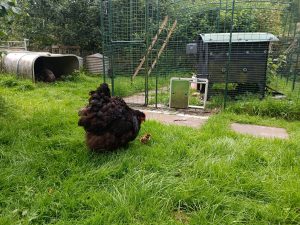
Obviously the roosting area wasn’t an ideal place to nest but we wondered if Betty felt more comfortable there. She’s a big girl and we thought perhaps she had decided the nest box was too small. So we went with Betty’s decision but would need to put some nesting material down for her if we were going to give her hatching eggs to sit on. Only one problem, we didn’t want to disturb her as she’d already had one disturbance with the move. After some pondering we decided to wait until she popped out for food and quickly nip in then and put down the nesting material. This window of opportunity was very small however as broody hens only come off their nests for about ten minutes a day, and only then if it’s warm enough to leave their eggs.
Unfortunately it rained the whole of the following day and Betty didn’t move from her nest once so our plan was scuppered. It looked like we’d be having another late night …
That evening, once again we tiptoed out into the orchard, carefully opened the coop door and lifted Betty out. At the same time we slid a nesting pad in place in the roosting area, and last but not least Betty and her egg. Phew, phase two complete.
When we peeked in the following morning we were relieved to find Betty sitting happily in the roosting area on her new nest. Now all we needed were some hatching eggs, so we contacted the farm where Betty and her siblings had come from as eggs three years ago and arranged to collect six eggs that evening.
Much as we wanted to give Betty her eggs right away, we waited a couple of days to make sure she was well and truly settled on her nest. Two days later things were looking good so that evening we once again tiptoed out into the orchard. We opened the coop door, carefully lifted Betty up and gently placed the eggs under her. She was dopey enough not to be too bothered and settled down again quickly, phew, phase three complete.
Eggs take three weeks to hatch so with everything now in place it would be a matter of waiting for nature to take its course.
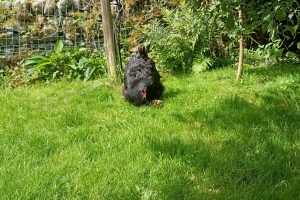
But Betty had other ideas. A couple of days after “operation egg” while Betty was in the run having some strawberries, I peeked into the coop to make sure everything was looking alright. To my surprise I realised she had moved back to the nest box (the original nesting area). She’d taken four of her eggs with her and left two in the roosting area. The four eggs she had moved were warm to the touch indicating that she was now sitting in the nest box. My first thought was to move the other two eggs into the nest box nest too, but I stopped and had a quick chat with myself. One thing we’ve learned having animals is to think carefully before intervening in these sorts of situations. More times than not the human way of doing things isn’t the best. I thought Betty must have her reasons for moving back into the nest box. Messing about with her egg arrangement might stress her out and the last thing I wanted was for her to abandon the nest altogether. So I decided to leave things as they were and thought if only one or two chicks hatched that would be lovely because we hadn’t planned to have any at all this year.
Over the following couple of weeks Betty settled into a routine. She popped out for ten minutes or so a day to eat while making her broody clucking sounds. If we spotted her out we gave her some strawberries which she gobbled up. Thankfully she didn’t move nest again.
The day before Betty was due to hatch she didn’t come out to eat and stayed in the coop all day. This is normal behaviour, hens stay in the coop because hatching takes several hours. The first time you know there are chicks is usually when you hear tiny “cheep cheep” sounds coming from the nest.
We left her to it and got on with other things. The following morning I snuck out and put my ear to the coop and heard a tiny “cheep cheep”, Betty had had chicks! Later that morning she emerged looking proud as can be, with one little orange and brown chick. I wondered if there were others so I carefully opened the coop door and peeked in. Sadly there weren’t, one chick had died hatching, two eggs had disappeared and two hadn’t hatched. It was a bitter sweet moment, but at least Betty had one chick and she was over joyed.
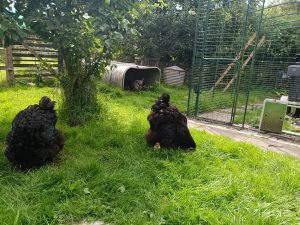
Over the next couple of days we watched Betty and her chick. The chick enjoyed climbing on Betty’s back and hiding in amongst her feathers. Betty showed her how to feed and drink. They spent a lot of time snoozing, the chick tucked under Betty’s wing. Betty cooed non-stop and her chick replied “cheep cheep”, it was adorable watching them.
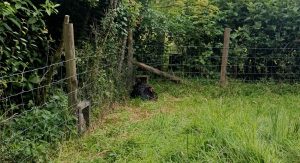
After three days in the nursery run we opened the door to give them access to the wider area. Betty needed space to stretch her legs and have a dust bath. It’s tempting to keep chicks cooped up but we have never done this. We’ve found it’s better for the mum and the development of the chicks to be out with the other hens learning the ways of the world. Chicks learn fast and are very adept at running under their mum’s wings at the first sign of danger. This said, we did spend the whole day watching them. This was mainly to make sure the other hens behaved themselves. Happily Betty’s broody hormones kept the other hens at a respectful distance and there was minimal fuss. In the evening we put Betty and her chick back in the nursery coop where they would be sleeping for the next few weeks.
The next morning we let them out again. The other hens mooched off to the lambing shed and Betty and her chick stayed in the orchard. It was a lovely day and I picked some blueberries from a bush in the garden, squished them up in my fingers and gave them to Betty who fed tiny pieces to her chick. I watched them for a while and took some photos. Then I nipped indoors to get something. When I came out again Betty was sitting in the wooden shelter. I had a strange feeling something was wrong, there was something about Betty that didn’t look right. A hen sitting on a chick looks slightly different from a hen just sitting. I lifted her up and my heart sank, there was no chick under her. I looked around but there was no sign of our little chick. I ran indoors and called Adrian and we both searched high and low. Every young bird tweeting, every leaf and fallen apple gave us false hope. But in the end there was nothing, no chick, no sign, just Betty and us looking and finding nothing.
Betty’s hormones stayed with her for another week. In the evenings when we scattered corn Betty still made clucking sounds and pushed corn around with her beak. But now she is back to her old self. Animals get over things quickly, at least they appear to. We will never know what happened to Betty’s chick. Perhaps a crow swooped in and took her, but it could equally have been a sparrow hawk or a stoat, there are predators all around us. In the meantime life goes on and we will always have precious memories of Betty’s wee chick for the short time she was with us.
